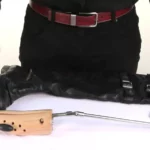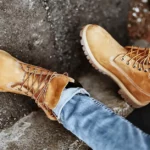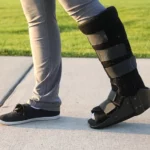Dream shoes, check. The lacing system, check. Materials, check. Size, check….. Wait, let’s go back a bit. Most people know the sizes of their shoes, but surprisingly, most people also get wrongly fitted shoes a lot of the time. The result? Wrong purchases.
So, how can you tell if shoes are too big? You can tell by checking if they move from one side to another when you wear them. If they don’t fit snugly around your feet and you have to drag them or curl your toes to lift them, then they’re too big for you.
The reason for the amusing anomaly of shoe sizes is simple; shoe sizes only tell you the length of the shoes, not the height and width. And though there are width measurements, most people don’t really have an idea of what theirs is.
How to Tell if Your Shoes are Too Big?
- Check the Size: This is one of the fastest and easiest ways to ascertain whether or not your shoes are too big. Locate the number of the shoe’s size (this might be in the shoe at the heel area, or under the shoe) and compare it to your normal shoe sizes.
- Check by Using Your Index Finger: This is usually a check for finding out if shoes are too small, but it can also be easily used to find out if the shoes are too big.
Just wear the shoe, push your toes forward, such that they enter the toe box but are not pressed up against the front of your shoes. Then slide your finger into the shoe. If the space is such that two or three fingers can go in without any resistance, then the shoe is too big.
- Tie the Laces: If the shoes have laces, wear the shoes as you would do normally and lace them up. If you have to continue tightening the laces to get the shoes to fit, then the shoe is too big and wide.
- Walk Around in the Shoe: Wear the shoes and walk around, making sure to notice how your feet feel in the shoe. If your feet slide a lot and feel loose around the sides, or you’re having to curl your toes to stop the shoes slipping, then the shoes are too big.
- Press the Toe Box: Sit down with your feet in the shoes and press the toe box. If the shoe fits properly, you should be able to feel your big toe, and also feel a little space between your toes and the shoe. If you can press the toe box down till it’s no longer a toe box but a footbed, then the shoe is not for you.
Problems and Effects of Wearing Shoes that Are Too Big
Shoes that are too big do have their own problems, and we have explained them below;
- Alteration of Natural Stride: The use of shoes that are too big for your feet will mean you have to walk in awkward, and frankly unnatural ways to compensate for the excess space in your shoes. The result? A severe alteration of the natural human stride when walking.
- Metatarsalgia: This is another really serious problem with wearing shoes that are too big. The ball of your foot will become inflamed and cause a lot of pain.
- Foot Corn: When shoes are too big, it is a natural reaction to squeeze the toes so we can at least stop the sliding of the shoe back and forth. This squeezing and bunching up of the toes causes a type of callus that occurs because of intense pressure on the toes.
- Falling/Slipping: Wearing shoes that are too large means you have little to no control over your own walking gait, and on slippery surfaces, this will almost always result in a fall. It could prove similarly disastrous to walk up the stairs wearing shoes that are too wide because a combination of the incline of the stairs and your loss of gait control will most likely lead to a fall that can be very serious.
- Blisters: Blisters don’t happen only when wearing small shoes. They occur because the material of your shoes are rubbing abrasively against the skin of your feet as it creates friction, and one will give way, usually the feet. Blisters are very painful and can take a while to heal if they are particularly bad. It is very important that you note this.
- The decrease in Performance for Athletes: One of the most important things for an athlete is to have properly fitted shoes, as they need all the control and grip they can get. Wide shoes tend to be unnecessarily heavy and cumbersome, and this is the last thing any runner wants.
This is because the acute lack of support will mean a lot of pressure will be concentrated on the calf muscles, giving the runner a feeling of being weighed down because the propulsive forward force has been greatly minimized.
What if my Running Shoes are Too Big?
If you already have a pair of running shoes that are too big, you might want to try the following tips;
- Wear thick socks with your athletic shoes. It would help add some bulk, which is bound to be useful. Be careful of doing this during summer though.
- You can use stuffings like tissue paper, cotton balls, etc to fill out the excess space. This is only useful for dress shoes in general, not athletic shoes.
- Insoles are another option. You can insert insoles to help fill up some of the space and provide cushioning and stability.
- You could also try getting the shoes to a shoe repair professional, who would know exactly what to do.
Conclusion & Final Words
Wearing loose-fitting shoes is always a bad idea, and it has similar effects to wearing tight-fitting shoes. There are a lot of problems associated with wearing big shoes, and all these problems can be avoided by getting properly fitted shoes, as they would provide your feet with the best possible support and balance when walking.




